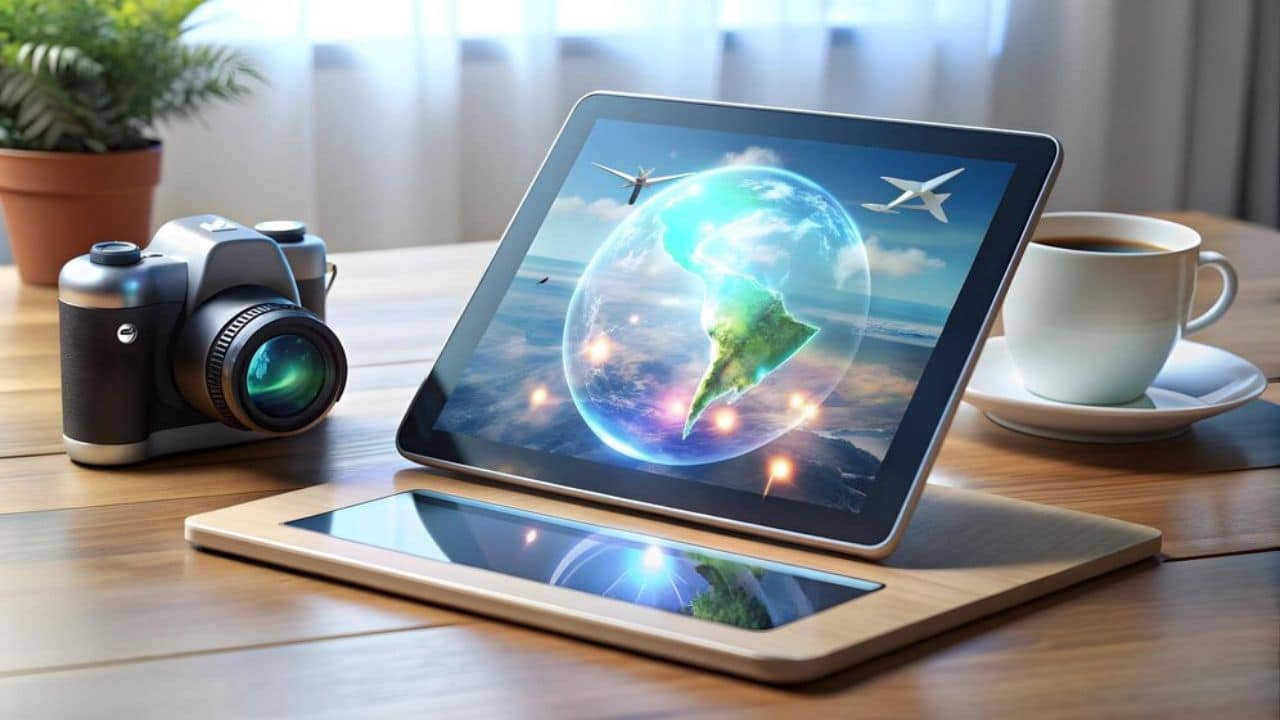You’ve been saving up PTO days for ages now, but it still just hasn’t happened. The thought of planning that big trip — or even that weekend getaway — always just seems too overwhelming. Between knowing what to pack, getting your passport renewed, and picking up some local phrases, you don’t know where to start. The image of that brave backpacker you saw in the mirror in your twenties is now buried deep down in your Facebook photo history.
It’s time to let all that go. Technology has changed so much that taking a big trip is no longer a massive endeavor. In most cases, you don’t even have to call your credit card company to let them know you’re going abroad. This and many other time-consuming odds and ends are now either unnecessary or have gone totally digital. Here are some of the ways technology is changing and making it so much easier to get out on the road or on that plane.
1. Handling the Red Tape
Once upon a time, if you wanted a visa to another country, you had to make an appointment in advance with the nearest consulate. Then, you had to get a money order to pay the fee, gather all your documentation, and go stand in line. The process could take days, weeks, or even months sometimes, counting the wait to receive the visa in the mail. You had to know your destination and make your plans ages in advance in order to get everything done on time.
Now, getting the necessary paperwork done is as simple as a few clicks. You can now apply for your visa, pay electronically, and have everything ready within a few days through online services like iVisa. Depending on your country of origin, you may also be able to renew your passport online. You can also buy travel medical insurance and schedule pre-trip vaccinations on the internet. You may even be able to get a prescription for antibiotics and other travel medications through an online clinic.
2. Working As You Go
OK, now you’ve got everything ready for your trip, but you can’t take as much time off as you like. Or, you want to be a digital nomad, traveling for extended periods of time while continuing to work. Pre-pandemic, that could be a big problem — employers thought you needed to be in the physical office to get your job done. Nowadays, remote work tools mean a huge percentage of employees can work from just about anywhere.
Project management tools like ClickUp and Asana enable managers to assign tasks and employees to work on them asynchronously. Chat and meeting tools like Microsoft Teams, Slack, and Zoom enable teams to stay in touch and collaborate on the go. Video messaging tools like Loom and Zight enable leadership to offer instant training and feedback. Just about any work task you can think of can be assigned, managed, completed, and submitted online.
3. Saving Your Money
Another problem: Even with all that work you’re doing, you may still not be making enough cash to make your trip happen. Or you may need help making it last, finding affordable flights and hotels, or handling currency conversions. As the saying goes, there’s (probably) an app for that, no matter what the financial task is. There are apps to help you plan the right budget, save on transportation and lodging, and even find better exchange rates.
For budgeting, some apps are designed to help you save up pre-trip, while others are made to help prevent you from overspending as you go. Cost-saving apps like Hopper, Skyscanner, Booking.com, HotelTonight, Hostelworld, Wanderu, and Rome2Rio can find you the most economical flights, trains, buses and accommodations. Different kinds of currency apps can help you find fair exchange rates and get access to your funds as you work and travel.
4. Getting Around
How about the basics, though, like getting by in the local language, navigating a new city, or packing your backs? Well, technology can help you with that too, as long as you know just what you’re looking for. To learn some new vocabulary and grammar, you can try language apps like Drops, Duolingo, Babbel, and music-based Lirica. Apps like Google Translate and Papago can translate text, voices, and even images in real-time.
For getting around a new place, map apps like Waze and Google Maps can help you find your bearings and avoid getting lost. Others, like CityMapper and Moovit, are designed for navigating public transit from Point A to Point B. When you’re too tired for all that, there are always Uber, Bolt, Cabify, and other options for calling a ride. Even walking is easier when apps like PackPoint and LighterPack let you optimize your backpack or suitcase for the lightest load.
Just Get Going
So what are you waiting for? With all these new technologies, you can plan a whole trip in just a few hours or days. You don’t even have to plan the whole thing in advance since you can keep booking and researching on the go. Plus, now that it’s so easy, many other folks will be traveling by your side. It won’t be hard to make new friends, ask for advice, or even fall in love abroad.
Just one caveat: With all those new travelers abroad, you’ll want to be extra considerate and conscious of your surroundings. Most locals are friendly, but some destinations are definitely feeling overwhelmed by the rush of new tourists. Learn as much as you can about local customs, do your best to respect them, and try to book ethical activities and accommodations. Make sure to observe local laws, posted signs, and practice basic human decency no matter where you are.










































